Then and Now: Being a student during times of great change
Then and Now: Being a student during times of great change
An alumna and a current student discuss their experiences living on the River Campus during historic times.
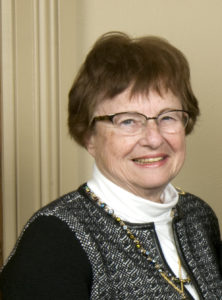
Irene Colle Kaplan’58 was an English major who spent more than 50 years teaching English in St Louis, Missouri; Seattle, Washington; Robbinsdale, Minnesota; Basel, Switzerland; and Guangzhou, China.
Although they are from different generations, Irene Colle Kaplan ’58 and Johanna Matulonis ’23 have both been part of University history during periods of great change. Colle Kaplan was a sophomore when the men’s and women’s campuses merged and Matulonis is a student now who has been living on campus during the pandemic.
Colle Kaplan and Matulonis share even more in common. They were drawn to the University of Rochester for its rigorous academic program. They were student athletes, too (Matulonis still is). Matulonis is also the recipient of the Edward L. and Irene Colle Kaplan Scholarship Fund, which Colle Kaplan and her husband, Ed, also from the Class of 1958, established in 2013.
Here the two women, from generations apart, discuss what campus life was like then, what it is like now, and how their time at Rochester has helped them build community and foster some of their most important relationships. As Colle Kaplan says, “Johanna’s experience living on the River Campus today is one for the history books.”
Why did you choose the University of Rochester?
Colle Kaplan: I originally thought I wanted to go to a women’s college—remember, back then, there were men’s schools and women’s schools. When it came time to fill out my applications, I was thinking about Smith or Mt. Holyoke. My father thought that Rochester would be the right size for me though and noted that the men’s and women’s campuses were slated to merge when I’d be a sophomore. He thought that could be good for me, and it was.
As wonderful as my first-year experience was on Prince Street, the next three as a coed on the River Campus were even more wonderful. I’m a retired English teacher and, looking back, I loved having young men and women in my classes—such a richness of ideas unfolded from both. It was the same at the University. And, as Johanna said, I wanted to go to school with smart people. Rochester had, and still has, so many of them.
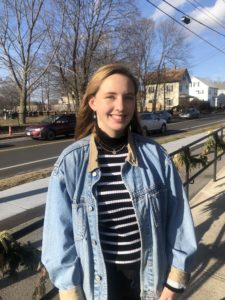
Johanna Matulonis ’23 is a Kaplan Scholar and biology major from Massachusetts. The Kaplans established the scholarship in 2013 as a way to support promising students from the School of Arts & Sciences.
Matulonis: The University stood out from other schools and not just on paper, but in person, too. It’s such a beautiful campus and it offered everything I wanted. Beyond that, I was drawn to the flexibility of the Rochester Curriculum. I came here not knowing what I wanted to pursue, so the variety of options appealed to me. I knew I could take a bunch of very different classes and explore my interests in areas like psychology, German, and biology, which is now my major. What I really love about the University though is that there are a lot of people with a similar academic mindset. We want to have fun, but we are driven, motivated, and know why we are here.
What was it like when the campuses merged?
Colle Kaplan: What Johanna and others know now as Susan B. Anthony Hall was our women’s center. All the women lived there. As first-year students on Prince Street, we weren’t sure we wanted to merge. We learned later that the men felt the same way. But we all faced that uncertainty with hope that it was for the best. It turned out that it was.
After the merge, the environment was so much more stimulating, and it was really easy for the men and women to be with each other. We became this self-contained community and we did everything together. That’s how we all became so close. My husband, Ed, and I met on campus as classmates. To this day, we talk about how the people we met back then are still our oldest and dearest friends.
What’s life been like on campus during the pandemic?
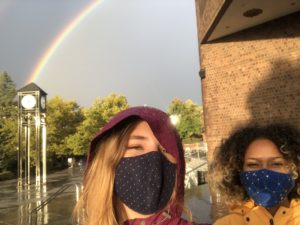
Life on campus now with Matulonis and friend.
Matulonis: I was on campus for a full semester and part of the spring semester when COVID-19 brought everything to a halt. This past fall I lived on campus, too, and I’ll be going back for the spring semester.
Things have changed quite a lot. Occupancy in buildings like the library is very limited. Activities and clubs that would normally bring people together aren’t meeting the way they used to. And we are all using Zoom for many of our classes, which is so different from being in a classroom—you can’t just turn to a friend in Zoom like you could in a lecture hall.
College life is definitely different, but it isn’t worse. For instance, I’m on the women’s rugby club team and although we can’t practice in person, we’ve found ways to make the best of the situation. We Zoom together and we workout together. The pandemic has definitely strengthened my campus relationships.
What are some of your standout memories from being on campus?
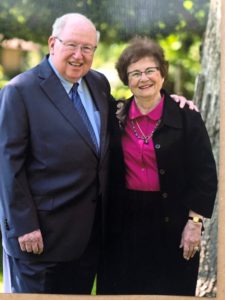
Colle Kaplan and her husband, Ed, a retired physician and professor emeritus at the University of Minnesota, have lived in Minnesota for 50 years.
Colle Kaplan: I have two. One is about the classes themselves. Johanna talked about the benefits of the open curriculum now. Back when I was a student, all the classes in the first two years were assigned. It was called “core curriculum.” We went to English, Government, Western Civilization, and other classes together. It was just an old fashioned, healthy atmosphere that we all loved. Mind you, we only had about 400 students in our class, so things were much smaller back then.
And, here’s a funny memory. Our synchronized swim team was doing our last show in our senior year. The lights went down, and we got into position. When the lights came back on, we saw that we had an extra swimmer with us. A duck. One of the guys had put it there. It was probably my husband-to-be and friends, although he and the others never fessed up. That would not have happened at an all-girls school.
Matulonis: Here’s something I don’t think I’ll ever forget that happened during the pandemic. It was a warm Saturday in early in October, around 75 degrees. I was involved in organizing bonding events for my sorority, Sigma Delta Tau, so we all grabbed food and blankets—and masks—and went to Highland Park where we had a picnic together. That was so much fun, and it felt so normal, which is a hard feeling to find right now. I also remember a pre-COVID time when a friend and I bought an ice cream cake to celebrate her birthday and we ate the whole thing together in one sitting. I love that it’s a close-knit community here.
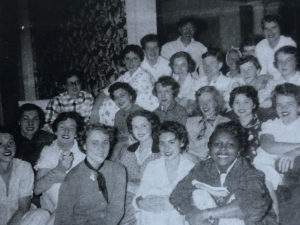
Colle Kaplan (third row up, left side, plaid shirt) and friends at the Bragdon House on Prince Street
What was your biggest challenge as student?
Matulonis: All the COVID restrictions can be isolating. For instance, we can’t hang out or go to the library. Being a college student on campus right now requires a certain level of maturity. We have to constantly think about what’s safe for ourselves and for those around us. I’ve chosen to be on campus because I know I can still share experiences with my campus friends. We’ve created this very solid support system for each other. We are all going through this together and there’s comfort in that.
Connect
Looking for ways to connect with the University of Rochester community? Consider joining The Meliora Collective, an exclusive, online platform designed for University of Rochester alumni, students, parents, and friends who want to make meaningful connections for personal and professional exploration and growth. Or, join an affinity group such as our Women’s Network. You can also volunteer, join a regional network, or attend a virtual event. Learn more here.
— Kristine Thompson, February 2021


